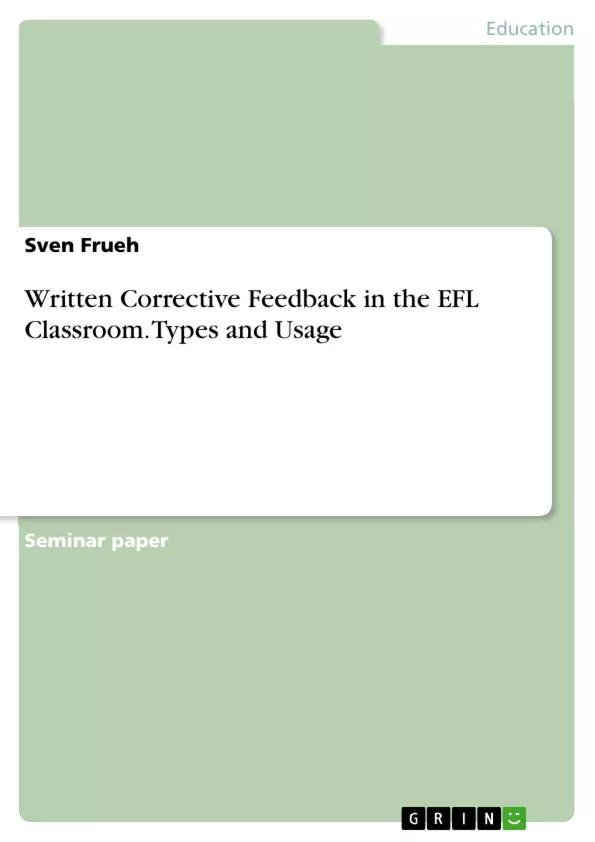This paper explores the types and the effects of written corrective feedback in the EFL classroom. Moreover, illuminative examples of written CF will be presented and discussed based on the findings. The examples are taken from a corpus of a variety of texts written by EFL students attending a pre-vocational school in Austria.
Corrective feedback (CF), hence, the way educators provide feedback on the second language (L2) learners’ errors in hopes of helping them improve their accuracy, has been a highly contested area of research that brings about a phenomenal level of interest from both teachers and researchers alike. Regardless of the interest and research into this field, many questions central to L2 development are yet to be answered unequivocally. Therefore, educators around the world still have to rely on experience, intuition, and expectations of students and parents for the production of written corrective feedback. Ellis argues that the biggest hurdle for re-searchers is designing written CF studies that investigate the effectiveness and impact of different types of CF systemically. Nevertheless, identifying and evaluating written CF options is an important element for reasonable decision-making in the L2 classroom.
Table of Contents
- Introduction
- Direct written corrective feedback:
- Effectiveness of direct written corrective feedback
- Reformulation and reconstruction
- Indirect written corrective feedback:
- Indirect written CF- Example Analysis
- Effectiveness and usage of indirect written corrective feedback
- Metalinguistic written corrective feedback
- Effectiveness of metalinguistic written corrective feedback:
- Focused and Unfocused CF
- Electronic written corrective feedback
- Types of written corrective feedback
Objectives and Key Themes
This paper investigates the various types of written corrective feedback (CF) used in EFL classrooms and analyzes their effectiveness in improving learner accuracy, stylistic decision making, and self-editing skills. The paper examines the advantages and disadvantages of different CF approaches, including direct correction, reformulation, reconstruction, indirect CF, metalinguistic CF, focused and unfocused CF, and electronic CF.
- Types of written corrective feedback
- Effectiveness of different types of written corrective feedback
- The role of self-editing skills in written feedback
- The use of electronic feedback tools in EFL classrooms
- Balancing feedback techniques to maximize learner progress
Chapter Summaries
The paper starts by introducing the concept of corrective feedback and its importance in EFL education. It then delves into the specifics of direct written corrective feedback, highlighting its strengths and weaknesses, as well as its appropriateness for different learning stages and error types. The paper then explores the nuances of reformulation and reconstruction as sub-categories of direct CF, examining their effectiveness in fostering stylistic decision-making and text organization.
The following sections delve into indirect written CF, metalinguistic written CF, and the distinction between focused and unfocused feedback. The paper analyzes the effectiveness of each approach in terms of accuracy improvement and self-editing skill development. Finally, the paper examines the increasing role of electronic corrective feedback provided by spell-checkers and grammar-checkers, acknowledging their potential benefits but also emphasizing the importance of understanding their limitations.
Keywords
The paper primarily focuses on the topic of written corrective feedback in EFL classrooms. It explores various types of feedback, including direct, indirect, metalinguistic, focused, and unfocused feedback. The analysis delves into the effectiveness of these methods in improving learner accuracy, stylistic choices, and self-editing skills. The paper also considers the use of electronic feedback tools and their implications for EFL learners.
- Citar trabajo
- Sven Frueh (Autor), 2020, Written Corrective Feedback in the EFL Classroom. Types and Usage, Múnich, GRIN Verlag, https://www.grin.com/document/1002051



